Natural Health Solutions
- The Well (Home Page)
- Water Cures Blog
- How To Do Water Cures
- What is Water Cures?
- Electrolytes & Salt
- Drinking Water
- Hire a Hydration Coach
- Acid Reflux
- Addiction Treatment
- Allergy Relief
- Blood
- Bones and Joints
- BP / Heart / Vascular
- Brain / Head / Mental
- Cancer
- Chronic Fatigue
- Cramps No More
- Dehydration
- Edema
- Fibromyalgia
- HIV / AIDS
- Immune System
- Lungs / Respiratory / Cough
- Lupus
- Lyme Disease
- Multiple Sclerosis
- Pain
- Skin Care
- Urinary Tract Infection
- Womens Health
- Water & Weight Loss
- Student Grades
- Survivalist Health Care
- Pet Water Cures
- Hydration Coach
- Testimonials
- My Water Cures
- FAQ
- In The News
- Volunteer
- About / Contact
- Red Light Therapy
- Live Blood Microscopy
Facet Joint Pain: Definition, Description, Treatment
Facet joint pain is one of the most common forms of lower back pain and neck pain. Facet pain rarely involves the nerves of the spine. As an orthopedic nurse, this is something seen quite often in my nursing practice. It was because of the inefficiency of the health care system or the people who refused to seek care and suffer in silence that caused me to look for alternatives.
Here you will find the solutions I share with my clients. In my practice, I do not charge until relief is attained. This is not a money back guarantee. It is guaranteed relief then pay.
Diagnosis of Facet Joint Problems
Facet Joint Pain Similar Conditions
The facet joints are the wing like hinge appendages on your back bones. They provide the link from one vertebrae to the next.
The facet joints, also called the zygapophysial joints are synovial joints. This means they have a fibrous surface that could be likened to Teflon that connect one bone to the next and which helps eliminate friction between the joint bones. In the case of the facet joints, the bones help support weight along with controlling the movement of the individual spinal vertebrae as well as providing stability. The facet joints work in harmony with the intervertebral discs making spinal movement possible.
Pain in the Facet joint can originate from the nerves around the joints or can come from bone spurs that cause pressure on the nerves.
Degeneration of the cartilage that protects the facet joint is the main reason for the degeneration and the pain. Without the cartilage to act as a cushion and friction reducing surface, the facet joints rub, bone to bone on each other. In addition to pain, it can also cause bone spurs which will cause additional pain.
The most common pain comes from the lumbar or lower spine. It is described as a constant ache, throbbing or even grinding sensation. Headaches and throbbing in the rib cage could likewise be present. More on this in the Symptoms of Facet Joint Pain.
Facet joint pain can affect affect any part of the spinal column. If the pain is in the neck, there may be difficulty in moving your head from side to side.
The facet joint pain comes either from inflammation or nerve impingement or pressure on the nerve.
The symptoms can vary and are easily confused with other disc related disorders. More on this in Conditions Similar to Facet Joint Problems.
Treatment includes non-invasive and surgical options. One treatment includes deadening the nerves so no pain is felt.
A common symptom of the joint pain is muscle spasms. Like a cramp, the muscles can pull the facet joint out of alignment. Just a few ounces of pressure can cause excruciating pain. Where a chiropractor or osteopath may be able to realign the back, the muscles can easily pull them back out.
The damage that results in injury is cumulative. So you can be lifting heavy things numerous times using poor posture, lifting with your back instead of your legs and each time furthering the damage. Then one time you bend over to tie your shoe and you cannot move. While the damage is cumulative or builds up over time, there is no warning that the damage is happening until it is too late.
One study found facet joints were the cause of ...
...the pain in the neck 55 percent of the time
...and mid back pain 42 percent of the time
...and 27 percent of the time for the low back.
There are certain characteristics of facet joint pain that help doctors to diagnose it rather than other causes of spinal pain.
Both lumbar and cervical facet joint pain tend to be unpredictable. The discomfort can be intermittent and can occur a few times a month or year. Because it is intermittent, some are left with the feeling that it is a psychosomatic problem, thinking that "it's all in their head."
There is usually a tenderness related to inflammation and decrease in flexibility. There will be an increase in pain leaning backwards than leaning forward. With lumbar paid, the pain may radiate into the butt and the back of the upper leg. One difference with facet pain and herniated disc pain is when the pain is present in the front of the leg or if it radiates below the knee or into the foot.
Cervical pain may extend up to the shoulder or upper back where as disk pain can go down into the arm and into the fingers.
With lumbar pain, standing may be slightly difficult but sitting and riding in a car causes the worst discomfort.
Where's the Pain?
Facet joints are on the back side of the vertebral column (where the disks are). They are a pair of bones on either side of the mid-line. Usually the pain will be on one side or the other.
Pain Description?
The pain is most often a dull ache felt deep within. Pressure on the affected area will hurt. There may be a decrease in the range of motion on the affected side. This kind of pain rarely will affect the way you walk or your posture.
Pain in the facet joint is usually localized. It does not travel or extend out very far from the site of the actual injury or pain. In the case of low back pain, it may extend into the thigh on the same side. Neck facet joints that are painful may radiate or extend out to the shoulder.
Unlike pinched nerve pain, there will be no numbness, tingling or weakness on the side that is effected.
Since the pain is unpredictable and it can appear monthly or even more often it becomes difficult to diagnose. Initially damage of the facet joint can be determined by X-ray. CT scans tend to show more of what is going on with the facet joints as well as other back related structures. The MRI scan is not quite as useful for diagnosing this particular spinal problem, but is extremely helpful when investigating possible disc or abdominal pain contributors. If there is nothing found on the MRI, there may be a problem with the near by structures (discs and ligaments of the spine). Injection Video (also called a facet joint block) where the problem facet joint is injected with a small volume of X-ray contrast, local anesthesia and cortisone. Diagnoses can be determined from pain relief.
Facet Joint Pain Commonalities: Similar Conditions
Whenever people try to self diagnose, there is a risk of getting it wrong. This is why we always recommend get a doctor diagnoses. The pain you can feel from facet joints can easily be confused with a herniated disk, an infection, torn muscle of your spine or even a fracture. And of course, it could be caused by arthritis.
Rarely it could be a problem inside your abdomen.
Likewise a front neck problem may have the pain of a cervical facet disorders. It is necessary to get an experienced doctor to diagnose what is going on.
There are various health care treatment option. Some work better than others, depending on the person.
Basic TreatmentFirst is rest and positioning so you are comfortable. Avoid any further stress.
Some recommend cold therapy and some suggest heat packs. Whatever seems to work best for you will probably be fine. Use this treatment for 15 minutes every couple of hours.
Most doctors will suggest anti-inflammatory over the counter drugs like ibuprofen. You should know that while they may help with the pain, double blind trials have found they can inhibit the healing. As such, using them is outdated advice, especially when there are foods and supplements that provide the same benefit and improve healing. Additionally, the natural treatments have no side effects and have far less cost both initially and in long term damage to the body that continued drug use poses.
Do not rest flat on your back for a week as has been suggested in the past. Gentle movement is better for healing.
More on facet joint osteoarthritis and facet joints to come.
Recent Articles
-
Dark Screen Microscopy: What it is, does and what it can tell you.
Jul 07, 19 05:23 PM
Dark Screen Microscopy allows for a BioNutritional Auditi to look at your blood in its whole, live state -
About Water Cures and how water can help improve your health and life
Oct 25, 18 09:38 PM
About water cures: information on the Water Cures Protocol, Dr. Batmanghelidj and the founder of this site, Bob Butts.. -
Water Cures Testimonials
Apr 16, 18 09:26 PM
Water cures testimonials of those who improved their health using the water cures protocol.
October 22, 2018...
Robert Butts, founder of WaterCures.org passed away at the age of 83. He will be missed.
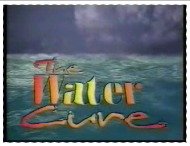
 |
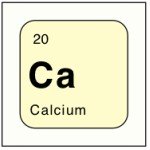 |
Warning: Research shows calcium supplements may be harmful to your health.
| Fixing Blood Disorders
Posted December 2016 |
 |
© 2016 Jonathan Steele
It is amazing how so many things that are new to us were common knowledge in the past. One basic practice of the Water Cures protocol is to drink at least 30-45 minutes before and 2 1/2 hours after a meal. This is not a new thought however. Notice what a magazine from 1925 had to say...
"Drink plenty of water two hours after each meal; drink none just before eating; and a small quantity if any at meal time. Do not take a bath until two hours after eating a meal, nor closer than one hour before eating. Drink a full glass of water both before and after the bath." (Golden Age, Sept. 9, 1925, pp. 784-785)
 |
New in 2016
Cancer 1, Natural Cures 0
The War...is against...
Cancer Natural Cures
---------------------
| Hand Joint Pain: How Can I Make It Go Away? |
 |
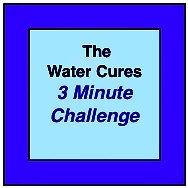 |
to try a no cost, scientifically proven way of improving your well being?
Click Here to try the 3 Minute Challenge
Find them right here!
 Shoulder Joint Pain Relief Shoulder Joint Pain Relief |
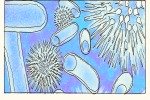 |
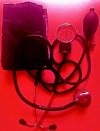 |
What Your Doctor's Not Telling You!
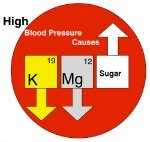 High Blood Pressure Causes High Blood Pressure Causes |
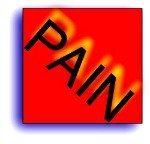 |
 |
We started expanding on the causes...
The weirdest...chimney sweep cancer. You won't believe where it strikes.
Our theory on...
Healthy Hydration for Athletics & the reason for hydration guideline failures in the past.
We speak to organizations small and large, private and corporate.
Our scientifically proven training works to improve performance and decrease lost days due to illness.
We are currently speaking to hospitals to train staff in ways to decrease the readmission rates in several disease processes that pose high risk of <30 day readmission.
We can cut the rates by up to 70%. Ask us how.
Nurse Jon for more information on hydrating to improve performance.
Here is the Science
We are not promoting increased salt intake. We are suggesting taking salt in amounts appropriate to your bodies needs, based on water needs. Our needs are not one size fits all.
Note: Do you have CHF or Kidney Disease? Then.....
THIS IS NOT FOR YOU.
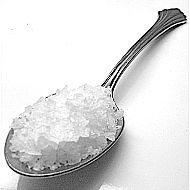 |
Read This Study
And Decide for Yourself
 |
For Most of Us, No!
According to a JAMA study.
A Review of the above JAMA Article
Study: Salt May Not Be All Bad?
Listen to your body. Do not use this if you are under a doctors care. Do not stop taking medications without consulting your doctor. If you are on medications, consult your doctor if you start the Water Cures Protocol as it may change your needs.
 |
Click Here to Discover How
 |
Click Here
Sign Up for your biweekly newsletter.
 |
 |
 |
If you are looking for an affordable alternative natural health care for depression, consider the Water Cures protocol.
Like What You're Learning? Please share your likes on Facebook
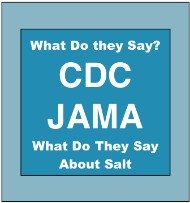 |
 |
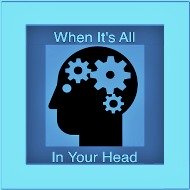 |
 |
Hi, my name is Sharon. The webmaster of this site is my nurse, my personal water coach and my husband.
As this site was first being built, I had a headache and as usual took an Ibuprofen. Impatient for it to start working, I decided to try the Water Cures. I took a pinch of salt and a glass of water. Then I took a second pinch of salt and another glass of water. My headache was gone in less than 5 minutes.
From my personal experience, it usually takes 30 to 45 minutes for Ibuprofen to work. Some have found it takes ibuprofen 24 minutes to start working.
Yet on the Water Cures protocol, my headache was gone in 5 minutes.
Its simple: give your body what it needs and your body will give you what you need, the ability to feel great.
Water Cures was the solution for the elimination of my headache. It is what I will use from now on.
Why not give it a try yourself.
